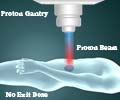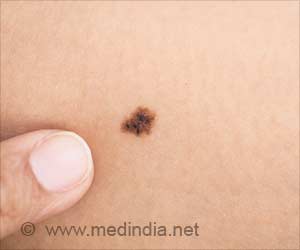
Ultrasensitive detection of circulating LINE-1 ORF1p as a specific multi-cancer biomarker
Go to source). The protein known as 'LINE-1 ORF1p,' derived from a human transposon, holds additional promise for applications in tissue diagnostics and could potentially aid in the treatment of cancer types lacking precise biomarkers.
‘The emerging concept is that the expression of pan cancer biomarker LINE-1 ORF1p serves as an early indicator in the cancer process, essentially becoming a significant characteristic of the disease. #coloncancer #breastcancer #cancerdetection’
Tweet it Now
Each test can be performed with merely half a drop of blood (25 microliters). The tool showed promise for early cancer detection and disease monitoring, and could potentially be used in conjunction with other tools for detection, risk stratification and treatment. Results are published in Cancer Discovery. Emerging Cancer Biomarker Detection Research
“Cancer biomarker detection is a burgeoning area of research and is still a young field,” said co-corresponding author David Walt, Ph.D., of the Department of Pathology at Brigham and Women’s Hospital, a founding member of Mass General Brigham. Walt is also a core faculty member at the Wyss Institute.The new study leverages a single-molecule-based detection technology known as SIMOA that was developed by the Walt lab. The test is designed to detect the open reading frame 1 protein (ORF1p), a transposable element protein that’s known to occur in many cancers but not in corresponding normal tissue, and that can indicate high risk of cancer lethality.
Researchers have long sought a sensitive, accurate test to detect ORF1p. The authors describe their first investigation of the test as a pilot experiment that wound up working better than they had imagined, which was followed by a series of engineering improvements and iterations in patient samples.
“We were shocked by how well this test worked in detecting the biomarker’s expression across cancer types,” said lead author Martin Taylor, M.D., Ph.D., of the Department of Pathology at Massachusetts General Hospital, the other founding member of Mass General Brigham. “It’s created more questions for us to explore and sparked interest among collaborators across many institutions.”
Teaming up with investigators across Mass General Brigham, Dana-Farber, Beth Israel Deaconess, and MIT in Boston and from Rockefeller University, University of Pennsylvania, University of Washington (Seattle), Johns Hopkins, Groningen (Netherlands), and Canon Medical, the researchers tested blood samples from patients with different types of cancers, including ovarian and colorectal cancer.
Advertisement
“Pervasive expression of ORF1p in carcinomas and the lack of expression in normal tissues makes ORF1p unlike other protein biomarkers, which have normal expression levels. This unique biology makes it highly specific,” said Taylor.
Advertisement
“The test is very specific, but it doesn’t tell us enough information to be used in a vacuum,” said Walt. “It’s exciting to see the early success of this ultrasensitive assessment tool, but there is more work to be done.”
The study’s pathology researchers are now working with clinicians to study the test’s accuracy in larger trial cohorts and different patient populations in order to understand if the assessment of the ORF1p biomarker would be useful for the care of their patients. They are also working to determine whether the biomarker can be used to stratify the risk of cancer in patients.
“We’ve known since the 1980s that transposable elements were active in some cancers, and nearly 10 years ago we reported that ORF1p was a pervasive cancer biomarker, but, until now, we haven’t had the ability to detect it in blood tests,” said co-corresponding author Kathleen Burns, M.D., Ph.D., Chair of the Department of Pathology at Dana-Farber.
“Having a technology capable of detecting ORF1p in blood opens so many possibilities for clinical applications. We were fortunate to assemble this tremendous team to push the limits of these assays and obtain and test these precious samples. There’s a lot of excitement as our work continues.”
Reference:
- Ultrasensitive detection of circulating LINE-1 ORF1p as a specific multi-cancer biomarker - (https://www.biorxiv.org/content/10.1101/2023.01.25.525462v2)
Source-Eurekalert















